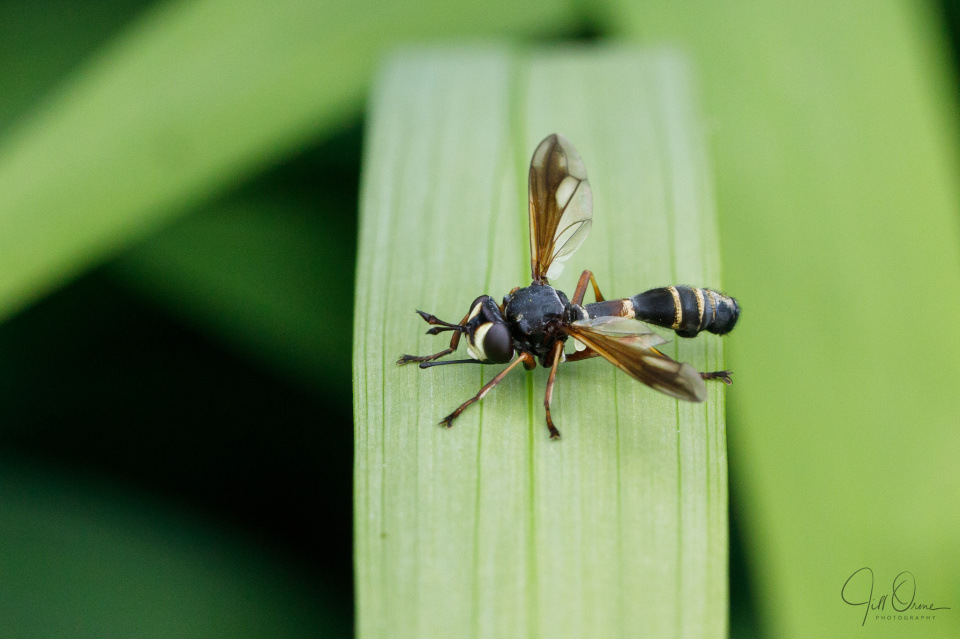My first thought when I spotted this was that it was some kind of hoverfly I’d never seen before, and it took me a few minutes to identify it as a conopid – though I don’t feel as silly as I might, because according to one web site I checked there are structural similarities which suggest that these flies are actually closely related to hoverflies. The Conopidae, colloquially known as thick-headed flies, are parasitic. The female seizes a host insect, which is usually a bee or wasp, but in some cases might be a cricket or grasshopper, and injects an egg into into its abdomen, where the larva develops until it kills the host, and where it then pupates, to emerge as an adult the following summer.
Although I haven’t yet been able to confirm it, I’m pretty sure that this is a female Physocephala rufipes, commonly called the waisted beegrabber. As you can see, she is pretty slender at the base of the abdomen, though she’s plumper than the almost bizarrely wasp-waisted male of the species. As for the bee-grabbing, P. rufipes parasitises a range of Bombus species, and can be found in any environment that supports a good population of bumblebees. She will seize her chosen victim in flight and use a hook-like modification underneath her abdomen like a tin opener, to prise apart the bee’s abdominal exoskeleton and insert her egg. For the rest of its life the bee’s behaviour will change, and it will spend more time away from the nest, though how and why this happens isn’t really understood. Some Physocephala species are even able to make their bumblebee hosts burrow into the ground before they die, which improves the parasite larva’s chances of pupating successfully.
Even though this was my first encounter with one, honesty compels me to say that Physocephala rufipes is widespread and frequent over much of southern Britain. Adults fly from June to October, and can be seen basking on foliage – as here – or visiting flowers such as thistles, knapweeds and ragworts.







